For our final project, Jake and I are creating a cavern exploration adventure game in the style of ZORK or Colossal cave adventure. We will make references to the other two games throughout, but the game will be playable without the context of the other two games. The game will be created in twine and will not be navigated like ZORK and Adventure in a text parser style, and instead will be a hyperlinked, choose your own adventure-esque game. This project will be investigating hypertext using twine, interactive fiction through the structure of the story and the references to other games, and collaborative fiction, as Jake and I will trade the twine file back and forth to create the game. Due to the explorative and collaborative nature of how we will be writing the piece, the plot is tentative and may go in a different direction.
The traverser plays as little red riding hood and begins the game by being told to deliver a basket to grandma’s house, in the forest. Before going in to the forest, the traverser may look around for tools that may help them throughout the game. For example, the traverser may remain in the house and look around, finding their red riding hood, which will keep the warm later in the game. While investigating the garden outside their home, they may take a vegetable and a gardening tool, which may help or hinder them during their quest. Upon reaching the forest, the traverser will fall down a hole and must navigate a series of caves to escape.
Aspects of ZORK and Adventure we plan on emulating in our game include an inventory with a set limit, navigating using the cardinal directions while in the cave system, and actions available to the traverser that leave the game unwinnable. The inventory system in ZORK adds an element of difficulty and strategy to what items a traverser needs to prioritize during the game. Little red riding hood carries a basket of food for her grandmother and will carry her inventory in the basket as well, giving us a narrative reason for her limited inventory. As the game is navigated through hyperlinks rather than a text parser, while in the cavern system there will be a hyperlink for each direction, as well as a hyperlink to the basket inventory.
Month: March 2019
Thoughts on Divergent Streams
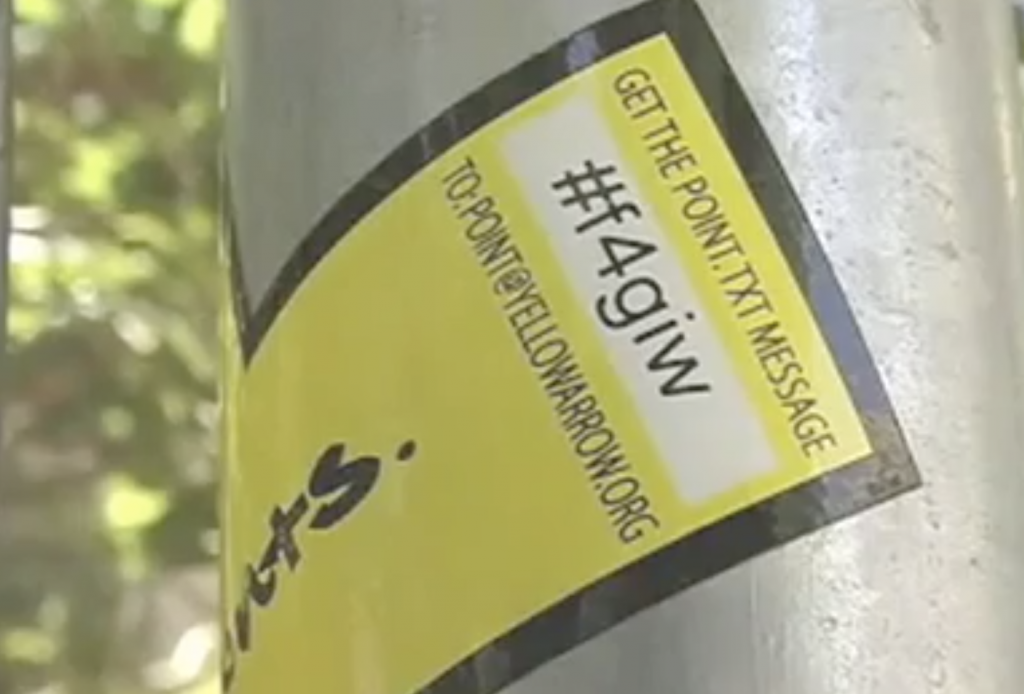
Of the different types of divergent streams the one, I found the most interesting was The Yellow Arrow Project. I went and watched the video of the project and have to admit I chuckled as I saw the brick phones that were used. The users would discover arrows and then text their part of the story. It takes the user on a unique experience in everyday life. I do think that it is a cool concept and something that could be updated to something more current.
It also made me think back to the days when I didn’t have internet on my phone. Through the use of a service called ChaCha, one could text a random question and get an answer. I think it would be interesting to take some of these conversations and make them into a digital literature piece.
In regards to literary possibilities for AR and VR. I think just through the current apps and games on the market one can see that this a very viable option with a plethora of opportunities. Having the user become part of the story and with the use of VR close off the outside world, an interactive story makes the user more engaged. With AR I could see something similar to a Pokemon Go experience where the user goes to specific locations to gain the next part of the story.
I found this chapter interesting and I think it would be cool to create a work similar to the ones talked about by Rettberg.
You Could Be “Player One”, Are You Ready?

Farinsky Blog 9: 3D Literature
Blog: Which of the new forms from “divergent streams” discussed by Rettberg interest you most? Why? What literary possibilities are there in virtual and augmented worlds?
People often choose to view the future of technology with optimism. I am one of those people when thinking about the “divergent stream” of Virtual Reality (VR) or Augmented Reality (AR) platforms. We may never have a program as imaginative, or as complex and widespread as the OASIS program from Ready Player One, a book written by Ernest Cline, but that doesn’t mean we do not have the potential to create something incredibly similar.
There are infinite learning possibilities that can come from VR technology. Imagine a “game” or a “collaborative digital virtual experience” where a warehouse or museum space is transformed through a VR headset which transports the user to the middle of a historical event.Students could put on headsets and “meet” recreations of historical characters, have an interview with authors they are reading in class, or view an important lecture by a prominent academic regardless separation by location or time. Think of how powerful experiencing education could become compared to passively reading textbooks or watching videos.
I am also excited by the possibilities VR bring because a VR headset and experience can add accessibility. In hospitals like UCSF Benioff Childrens Hospital:
Or this video by Mashable:
Think about an individual who could “leave” their hospital bed or “attend” classes because the immersive nature of VR makes travel possible. Pain patients participating in studies with VR report decreases in the amount of pain they experience, people could learn to walk based on moving a character’s leg instead of being limited by mental blocks about using prosthetics, and these ideas are just the surface:
What if home-bound individuals could put on VR goggles or use an AR camera to initiate a program where the author of a book (or another individual) reads the book to this person so they are stimulated and potentially feel less lonely?
Do you think learning about Martin Luther King Jr’s incredible rhetoric would be more powerful if we created an experience where you were listening to his speech at the Washington Monument as a member of the crowd?
The future of this technology is powerful if we can harness the ability of VR and AR to provide meaningful experiences that challenge our understanding, and empathy, as individuals.
Final Essay Description
My final essay is going to be a Twine piece that takes heavy influence from Robert Coover’s “The Babysitter”. Coover’s piece has been the most fascinating work we have explored in class, and I want to use electronic literature to expand what he sought to achieve with “The Babysitter”. In order to do so, my piece is going to follow an average day for someone suffering from intrusive thoughts and maladaptive daydreaming.
Intrusive thoughts are common within people suffering from common mental illnesses like depression and anxiety, giving them involuntary thoughts that can become distressing, obsessive, upsetting, and more. Combined with maladaptive daydreaming, a much more intense form of daydreaming that often disrupts human interaction and connection with the real world, these thoughts can feel so real that the sufferer may have a hard time remembering what events actually happened and what was simply in their head.
I think this is a really fascinating topic to explore in this medium to both attempt to combat the stigmatization of mental illness and create a nonlinear storyline. Like many modern hypertext fiction writers, I am choosing to use Twine to produce my piece. Doing so will give me the visual advantages of the software to lay out my story as well as give the readers a simple platform to traverse the story. With little explanation of what the piece is about, I hope to confuse the readers much like “The Babysitter” does, but do so in a way that catches their attention and encourages them to look through the piece multiple times to understand its meaning.
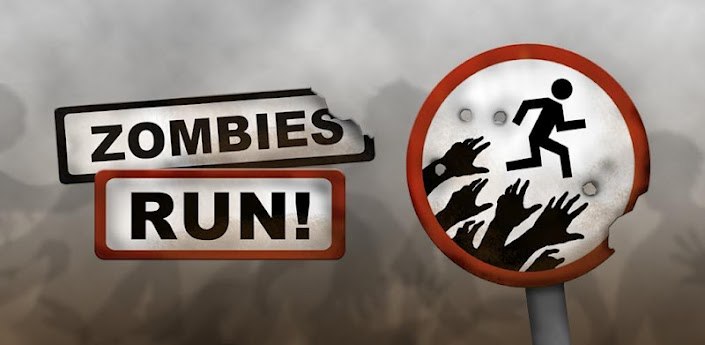
3D Literature
This final chapter of Rettberg’s “Electronic Literature” introduced me to forms of literature that I had heard of before, but never made the connection of them being considered literature. I was really drawn to the geolocation-based literature. With the experience of geolocation-based games (which I am more familiar with), I find the concept fascinating. The ability to pull the real world into a possibly fictional one, or, as the book mentioned, a reimagining of the past, takes literature to another level. It allows readers to truly experience the work, and in a way, be a part of its creation and telling.
Another example of literature caught my eye that the book mentions by name, and that’s “Zombies, Run!” The geolocation-based running app. I have personal experience with this app and it truly makes exercise far more enjoyable. When the story begins, you are a nameless character who is running from some zombies after your helicopter has crashed. You are in contact with Samuel of the “Abel Township” who talks to you via a walkie-talkie. Throughout, you’re introduced to more characters and storylines through ‘Missions’, and there is the added interaction of picking up supplies (a robotic voice will pipe in every once in a while to say you’ve picked up a water bottle), which you can later use in the app to upgrade your ‘base’. Occasionally, if you have Chases turned on, you will hear zombies getting closer and closer, and you’ll have to pick up your pace in order to outrun them, or lose some supplies. The characters in the story do all the talking, all you have to do is run (or walk, or row, or bike, etc.).
The world of augmented reality and virtual reality, is extraordinarily vast, and I think, will only grow as technology does. I’m reminded of the 2009 sci-fi movie “Gamer”, where, in a future of virtual reality gaming, players control actual people in real-life battles. I certainly don’t think that is the direction we would go, but I use that to demonstrate the scope of the technology.
Divergent Streams
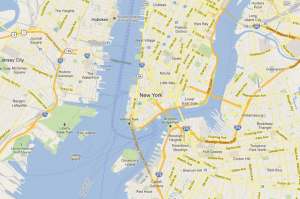
This chapter of Rettburg is especially unique in the sense that he discusses some of the more modern and advanced methods and technologies used to create and enhance electronic literature. The section of the chapter that interests me the most pertains to locative narratives and how the incorporation of data regarding our locations assists in the creation of narratives.
As stated by Rettburg:
“The majority of locative narrative projects share a common interest in the relationship of physical space and geographic location to the narrative and poetic dimensions of literature” (185).
The addition of the element of location can enhance the narrative of a work by giving the reader a sense of visualization to base their understanding of the work on. For instance, if a given work of electronic literature takes place throughout Portland, Oregon, the addition of a visual representation of where the story takes place on Google Maps adds to the overall narrative of the work. The incorporation of something such as Google Street View would also add a visual element to a work and would thus add another narrative layer to the work.
The fact that Google Maps is an open API that anyone has access to and may use for their project grants authors of electronic literature the ability to incorporate elements of location into their work. Mr. Beller’s Neighborhood for instance is a set of stories that are tagged with a location on Google Maps, and each story is located on different points on a Google Maps view of New York City. Being able to see on a map where each story happens to be pinned adds to the narrative and gives the reader an idea as to why each particular story is written as it is.
Virtual and Augmented Reality
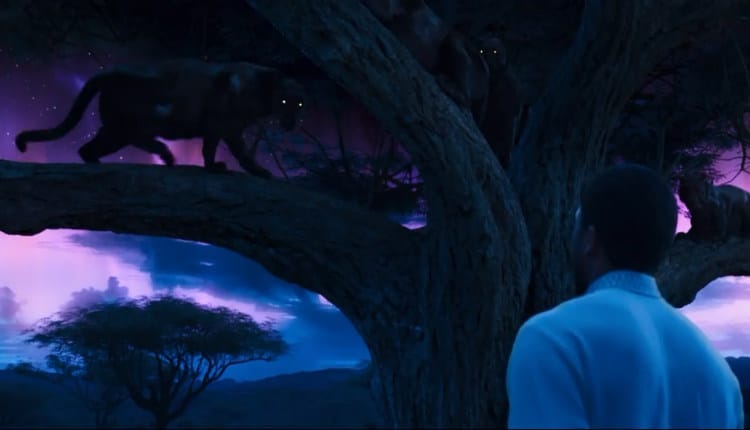
I first began hearing about virtual reality around 2014. The Oculus Rift had just been funded and was then purchased by Mark Zuckerberg and Facebook. Hearing about it for the first time and watching multiple youtube videos I became especially excited for the potential to play large open world games like Skyrim or Fallout within VR. I hadn’t considered the use of VR for story telling alone outside of the realm of games. The user doesn’t necessarily need to interact with a piece to become immersed within it. It would not surprise me if very soon films began being made specifically for VR. One indication that cinema is headed this direction is the new screen x movie screenings. Screen X is essentially three movie screens being used to expand the view of a film. There is the usual front facing screen and then two screens on either side of the viewer that continue the scenery of the middle screen expanding and building the setting around the viewer. The most Prominent film that has been play this way is Marvel Studios Black Panther. The extra screens are turned on when the characters arrive back in Wakanda and when the main character T’challa is in another world that allows him to talk to his ancestors. This three screen approach could almost be considered virtual reality for multiple viewers.
AR is something that has become very popular in app development in recent years. I most cases AR is being used for games such as Pokemon GO or the new Harry Potter game that has just been announced. AR also has great potential for storytelling especially in the case of informative walking tours. Currently in the Senior Seminar we are developing a couple different AR experiences to tell historic stories of Downtown Vancouver. AR allows a user to see a simulation of how something would look in the real world, like the face of an old building directly next to a current city skyline.
Augmented and Virtual Realities.
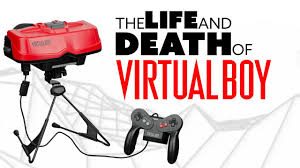
Virtual Reality has recently risen in popularity in recent years. A type of technology that in theory “transports” you into the world of whatever game you’re playing, movie you’re watching, or story you’re reading is a very interesting concept that has been around for many years. We’ve only recently started to get the technology to actually be able to create this in a way that is effective and works how it should. Virtual Reality was also the basis of the movie “Ready Player One”, which is set in a future world where basically everyone lives in a VR world, because the real world is corrupt and slowly deteriorating. The idea of being able to actually enter and interact with your favorite worlds is a fantasy that most of us have wanted since we were little kids. Didn’t you ever want to be in the world of Harry Potter, Lord of the Rings, Percy Jackson, Eragon, etc? With VR this will eventually be possible. Video game companies are already capitalizing on the world of VR. Such as the PlayStation VR with motion controllers and a headset that will transport you into the world of a video game. This isn’t the first time a VR set was created by a company. The first time I actually learned about VR was when I was doing a timeline of the history of Nintendo consoles for a school project. One of the ones I found was called the Nintendo Virtual Boy, which was a system that had the idea of using VR to play games. However, the console was a massive flop mainly because of the technical limitations there were at the time. Mostly the fact that the only colors you were able to see were red and black. 
The idea of VR is so cool and has been around for quite a while, so it’s going to be awesome to see what we can do as technology only progresses. Augmented Reality however, is far more common. While Virtual Reality transports us to other worlds, Augmented Reality effectively puts other things into our world with the use of camera or other device. AR was really big on Nintendo’s DS Systems, most notably I believe the DSi was the first to start using AR through the use of its camera. The 3DS expanded on this by giving us 3 dimensional augmented reality. As a kid, this was really cool to play with and something I used all the time. Of course, the limitations were still there so most of the games were just little minigames and weren’t too amazing, but it was still something very new and fun to explore. The use of AR was then made extremely popular through the use of the app Pokemon Go, which came out in 2016. The use of AR in the app is optional, but many fans of the game were loving the idea of seeing Pokemon in their every day life. There were so many posts on social media of funny places people had found Pokemon and everyone was having a ton of fun with the idea.

Divergent Streams

Technology allows creators to tell stories in just about anyway they can imagine. They are no longer limited by print and have the opportunity to come up with unique methods that help convey their story the best way possible. These sorts of modern stories oftentimes revolve around various types of hardware and screens. Some stories like Text Rain take the elements our languages have been using for centuries and find unique uses for them. It could even be called a new form of reading, not just playing. The rise of virtual reality has been a slow one. Ever heard of the Virtual Boy Nintendo made in the 90’s? It only had the colors red and black. It was a massive flop and they’re just now getting back into trying out virtual reality. Obviously since the virtual boy, technology has gotten much better. I think there is much potential with placing yourself in a space where you are completely surrounded by the world the story is being told in. I’m looking forward to when VR becomes cheaper and wireless. The less boundaries there are the better. I have seen a bit of worrying going on that concerns people being too intimate with the VR experience. Wearing a VR headset with headphones is a convincing way to remove you from reality. I think if it is done in moderation and users take the headset off every hour or so to check what is going on, things will be fine. AR is something I have had more experience with. I have seen it used in museums to give more info on exhibits. Some even include animations. Pokémon GO introduced many to AR too.
“Virtual and augmented reality have also provided new tools and approaches for the presentation of narrative and poetic works of electronic literature in immersive environments.”
Expanded Cinema, Virtual Reality and Augmented Reality
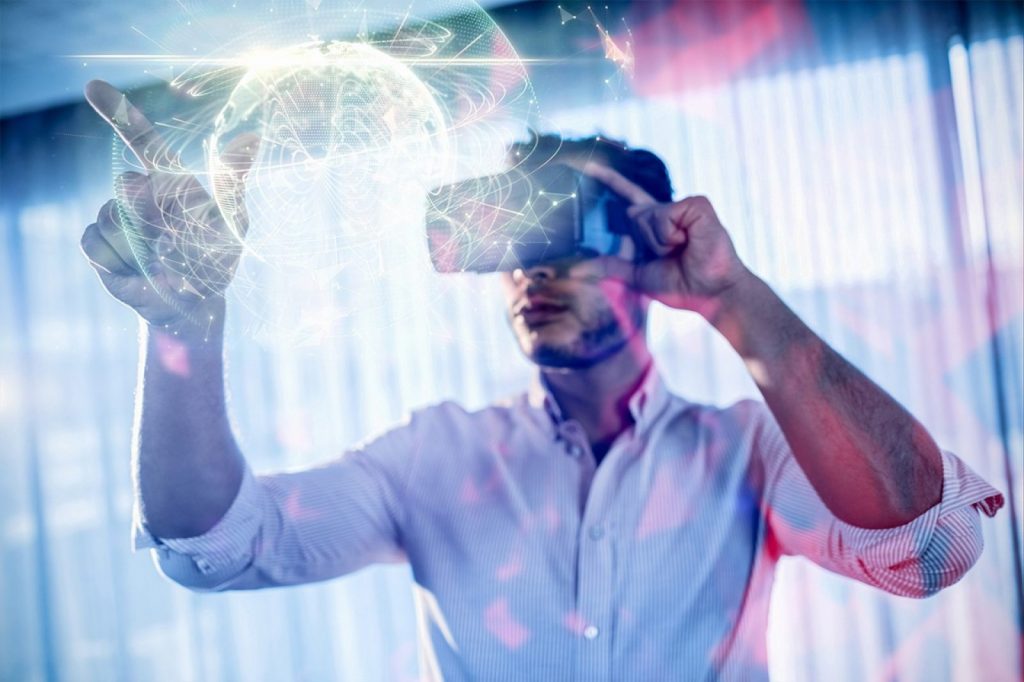
I’ve read through Scott Rettburgs chapter on Divergent Streams and, I have got to say, that the from that really sticks out to me would have to be “Expanded Cinema, Virtual Reality, and Augmented Reality.” The reason why I felt like that one seemed the most interesting to me is because I have always been the guy that’s fascinated buy tech that can put us into another place without even having to leave your own home. I never thought that we could live in an era that Virtual Reality would be a possibility, you would be able to truly experience the fictional world for yourself by truly being the main protagonist and going onto an adventure that you’ve always wanted to go on when you where just a kid.
“3D or even “4D” cinema experiences are now commonplace. In a somewhat humbler way, expanded cinema has also crossed over into electronic literature, as a number of writers and artists have produced works that apply techniques and approaches common in electronic literature in the construction of cinematic experiences.”
This explains that even things like Virtual Reality and Augmented Reality as well as Expanded Cinema can work, fantastically, in electronic literature by telling us a story and having to choose your own path or, in Augmented Reality case, play Pokémon Go because It is a great example of Augmented reality which is adding a virtual feature inside of the real world and you progress by catching Pokémon and leveling them up but in order to achieve said goal, you are going to have to actually walk around town which, I think, is an amazing mechanic.
Edge of Reality: Locative Narratives
Reality is what we agree on. My shirt is blue because light waves bounces off of it at around 650 THz, and we agree that that color is blue. My perception of this color may not be the same as your perception of the color, because we have no way of knowing if our brains color code these light ranges differently, and anything I point to that’s approximately the same frequency will look like the same color to you. With that considered, if we can’t even be sure about colors, what can we be sure of? Well, while we may have our minor differences in how we perceive our individual subjective realities, we put anyone who deviates too far from the norm in a nice safe space where they can’t disagree with us anymore. Until now, I suppose.
Virtual Reality, GPS, portable computers (or phones as you may call them), and Augmented Reality together have the ability to change our perceived realities. The notion of Virtual Reality and being able to roam in “cyber space” like some separate world is no stranger to popular fiction, and arguably isn’t far off from modern tech. What with products like Oculus Rift and PlayStation VR, developers are already playing with creating entirely new virtual 3-dimensional spaces to explore and interact with.

Games like Pokemon Go however overlap these virtual spaces with real ones. With the use of a camera, you can even see the cute little guys appear in your living room. For now, these digital sprites float around unanchored to the backdrop of reality, but don’t expect that to be the case for ever, and while Google Glasses were a flop, smart watches have shown that wearable smart tech isn’t going anywhere. These days, everyone carries a personal computer in their pocket, linked up to a global network, and it seems like you can’t get away from digital assistants like Siri or Alexa. The “digital world” isn’t something that’s separate from the “real world,” they’re overlapping and beginning to bleed together, so who knows what could possibly come about in the future as these and other technologies continue to evolve?

Also I lied, my shirt is gray. Blue just sounded like a better example color.
Interactive Installations

Interactive installation is a form of Divergent Stream that is most interesting to me. This form can use various styles of storytelling, such as kinetic text and prose. I am a writer; I can see myself working within this genre and using kinetic poetry and hypertext fiction as a way to let others interact with my work to see what they would do with it. From what I have gathered from the text, performance art can be included in this genre. I find it interesting that language can be used as a signifier. The text explains it as an artist applying paint to canvas. This is interesting, I have never thought of language being used in such a way, and certainly not in a performance art setting.
The possibilities are endless in virtual and augmented world. Imagine if one can project a poem at an exhibit where anyone can interact with the poem, such as Tony Stark (Iron Man) interacting with his holographic projector and change line breaks and moving words around so the poem can take on a different meaning. I can also imagine users interacting with the hypertext fiction. For example, if the user can interact with an author’s hypertext fiction in a 3D, or virtual reality environment where words seems to float in midair; with a wave of a hand the users can advance the story. I imagine this being on display in place like Disney World’s Epcot Theme park. This would be a great and fun way for the genre to become mainstream.